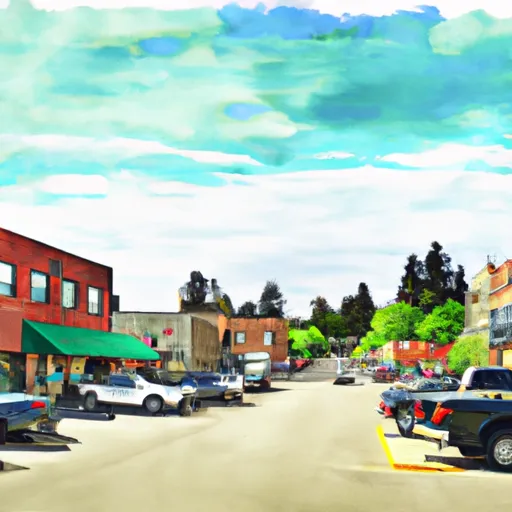-
 Snoflo Premium
Snoflo Premium
Get unlimited access to all our content
With no Ad interruptions! - Start Your Free Trial Login with existing account
Carlton
Eden Index
Climate
8.2
•
Recreation
2.7
•
Community
•
Safeguard
4.2/10

Carlton, located in the Methow Valley of north-central Washington, experiences a semi-arid climate with hot summers and cold winters. The area is known for its abundant hydrology, with the Methow River running through the town and nearby areas featuring numerous lakes and streams. Outdoor recreation opportunities abound, including hiking, mountain biking, fishing, and skiing in the winter. The Methow Valley is home to over 120 miles of groomed cross-country ski trails, making it a popular destination for winter sports enthusiasts. The surrounding mountains also offer ample opportunities for backcountry skiing and snowshoeing. In the summer, visitors can explore nearby national forests and wilderness areas, or take a dip in the refreshing waters of the Methow River.
What is the Eden Index?
The Snoflo Eden Index serves as a comprehensive rating system for regions, evaluating their desirability through a holistic assessment of climate health, outdoor recreation opportunities, and natural disaster risk, acknowledging the profound impact of these factors on livability and well-being.
Climate Health Indicator (CHI): 8.2
Carlton receives approximately
363mm of rain per year,
with humidity levels near 64%
and air temperatures averaging around
8°C.
Carlton has a plant hardyness factor of
6, meaning
plants and agriculture in this region thrive during a short period during spring and early summer. Most
plants will die off during the colder winter months.
By considering the ideal temperature range, reliable water supplies, clean air, and stable seasonal rain or snowpacks, the Climate Health Indicator (CHI) underscores the significance of a healthy climate as the foundation for quality living.
A healthy climate is paramount for ensuring a high quality of life and livability in a region, fostering both physical well-being and environmental harmony. This can be characterized by ideal temperatures, reliable access to water supplies, clean air, and consistent seasonal rain or snowpacks.
Weather Forecast
Streamflow Conditions
Upper Columbia
Area Rivers
Upper Columbia
Snowpack Depths
Upper Columbia
Reservoir Storage Capacity
Upper Columbia
Groundwater Levels
Recreational Opportunity Index (ROI): 2.7
The Recreational Opportunity Index (ROI) recognizes the value of outdoor recreational options, such as parks, hiking trails, camping sites, and fishing spots, while acknowledging that climate plays a pivotal role in ensuring the comfort and consistency of these experiences.
Access to outdoor recreational opportunities, encompassing activities such as parks, hiking, camping, and fishing, is crucial for overall well-being, and the climate plays a pivotal role in enabling and enhancing these experiences, ensuring that individuals can engage in nature-based activities comfortably and consistently.
Camping Areas
| Campground | Campsites | Reservations | Toilets | Showers | Elevation |
|---|---|---|---|---|---|
| Averill - WDFW | None | 1,213 ft | |||
| Campbell Lake - WDFW | None | 2,818 ft | |||
| Memorial - Boulder Creek - WDFW | None | 2,079 ft | |||
| Blackpine Lake | 24 | 4,093 ft | |||
| Buck Lake | 8 | 3,268 ft | |||
| Flat | 12 | 2,553 ft | |||
| Bobcat - WDFW | None | 2,145 ft | |||
| Ramsey Creek - WDFW | None | 2,957 ft | |||
| Bear Creek - WDFW | None | 2,728 ft | |||
| Foggy Dew | 13 | 2,167 ft |
Nearby Ski Areas
Catastrophe Safeguard Index (CSI):
The Catastrophe Safeguard Index (CSI) recognizes that natural disaster risk, encompassing floods, fires, hurricanes, and tornadoes, can drastically affect safety and the overall appeal of an area.
The level of natural disaster risk in a region significantly affects safety and the overall livability, with climate change amplifying these risks by potentially increasing the frequency and intensity of events like floods, fires, hurricanes, and tornadoes, thereby posing substantial challenges to community resilience and well-being.
Community Resilience Indicator (CRI):
The Community Resilience Indicator (CRI) recognizes that education, healthcare, and socioeconomics are crucial to the well-being of a region. The CRI acknowledges the profound impact of these elements on residents' overall quality of life. By evaluating educational resources, healthcare accessibility, and economic inclusivity, the index captures the essential aspects that contribute to a thriving community, fostering resident satisfaction, equity, and social cohesion.

